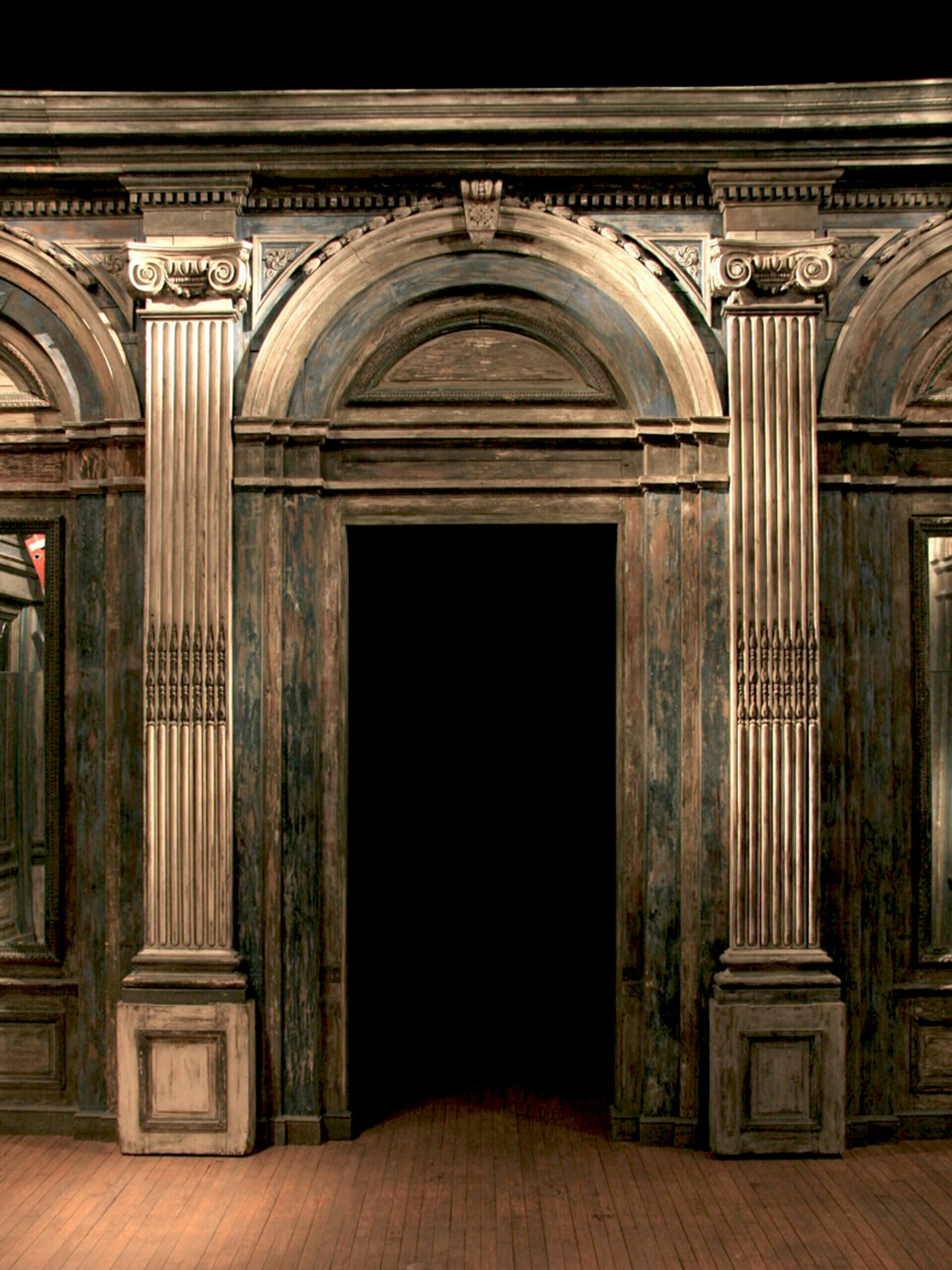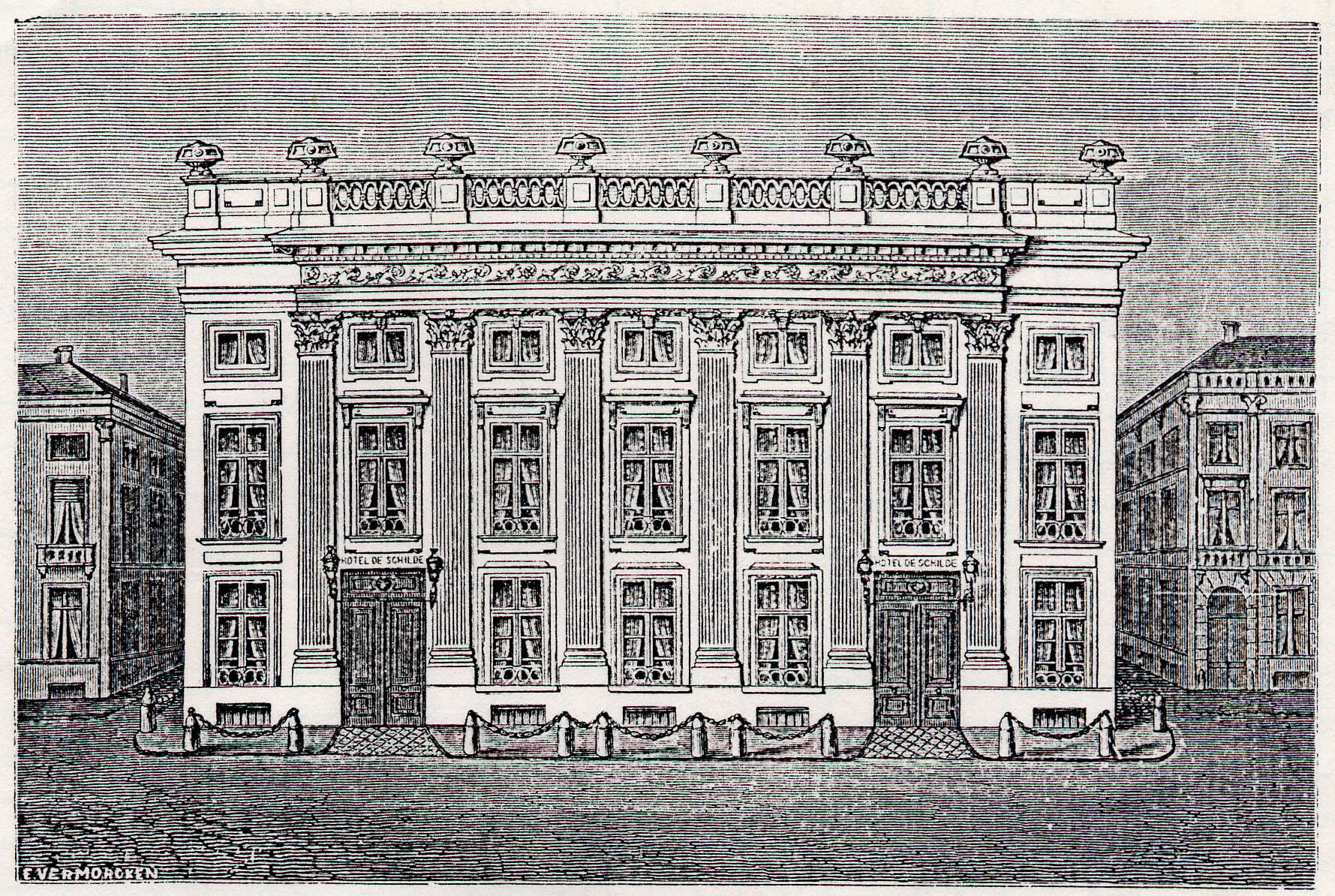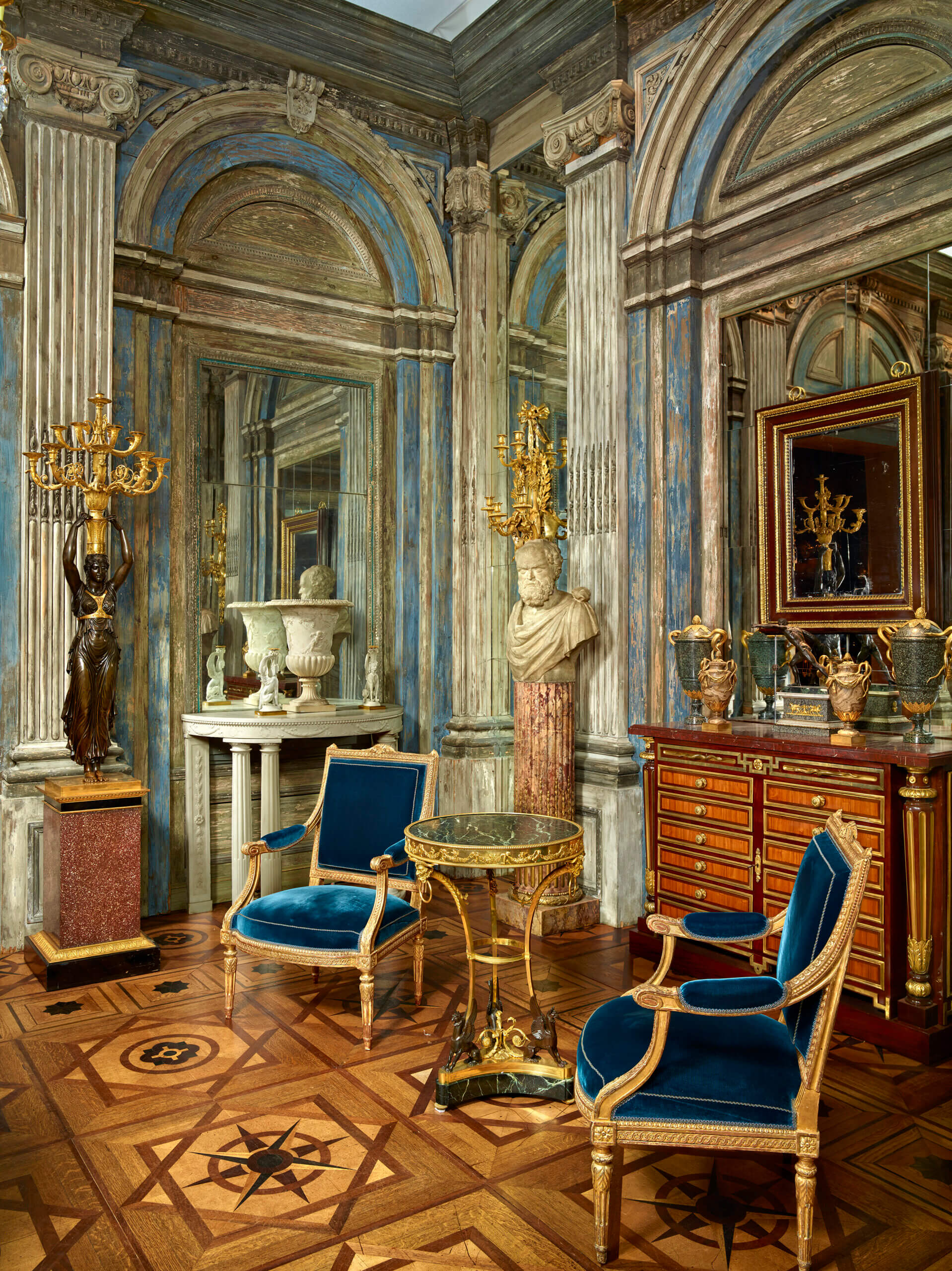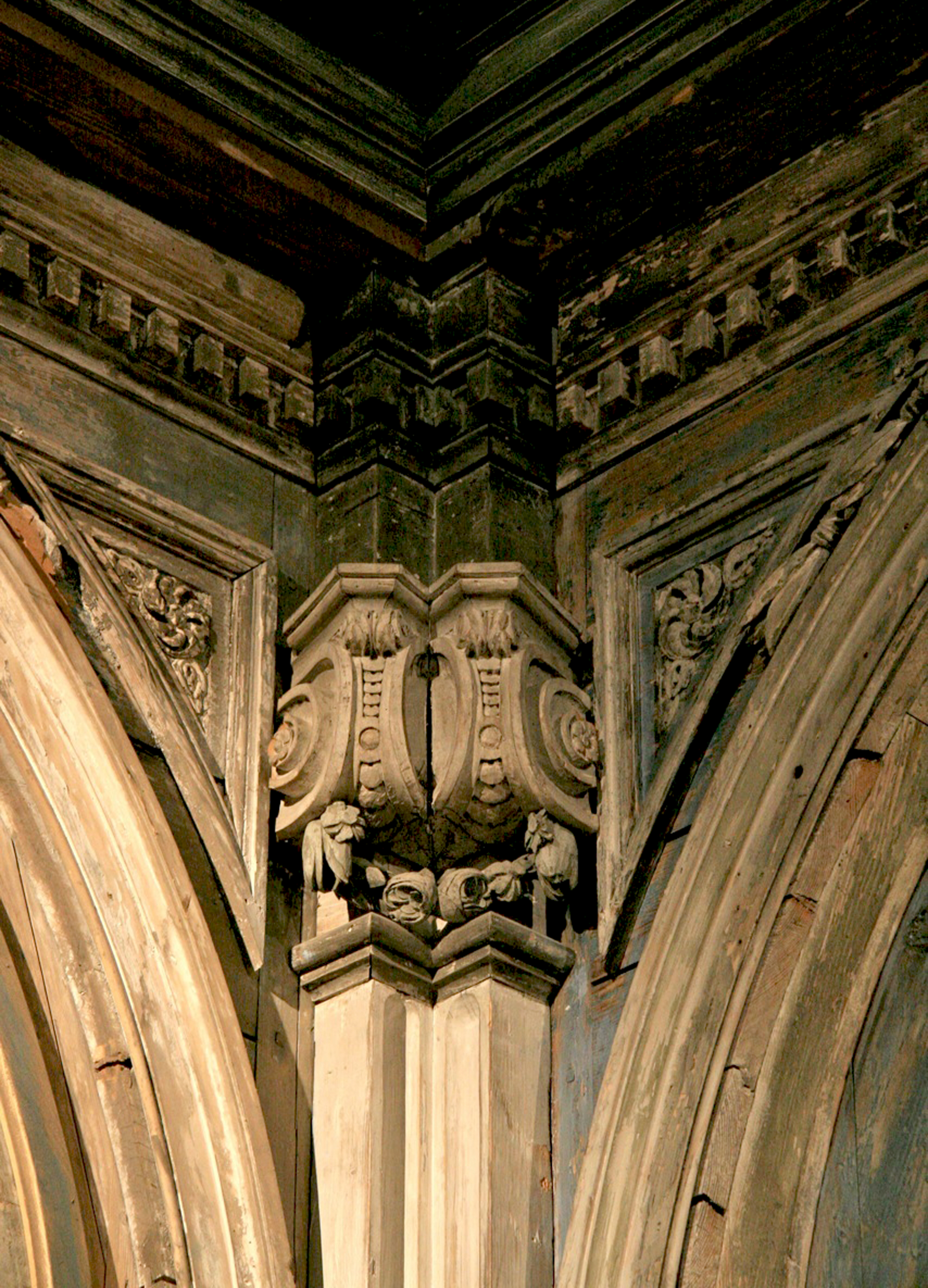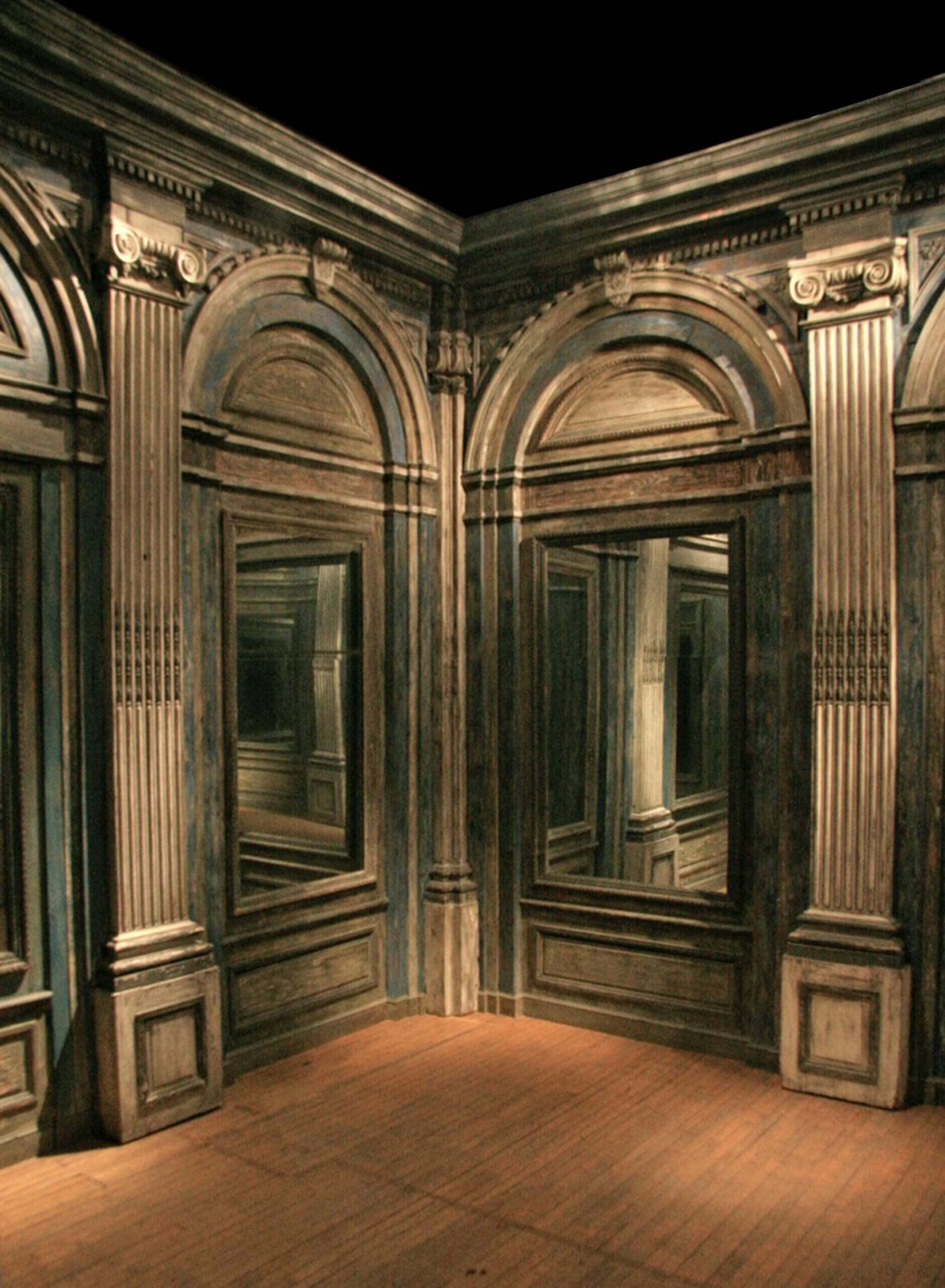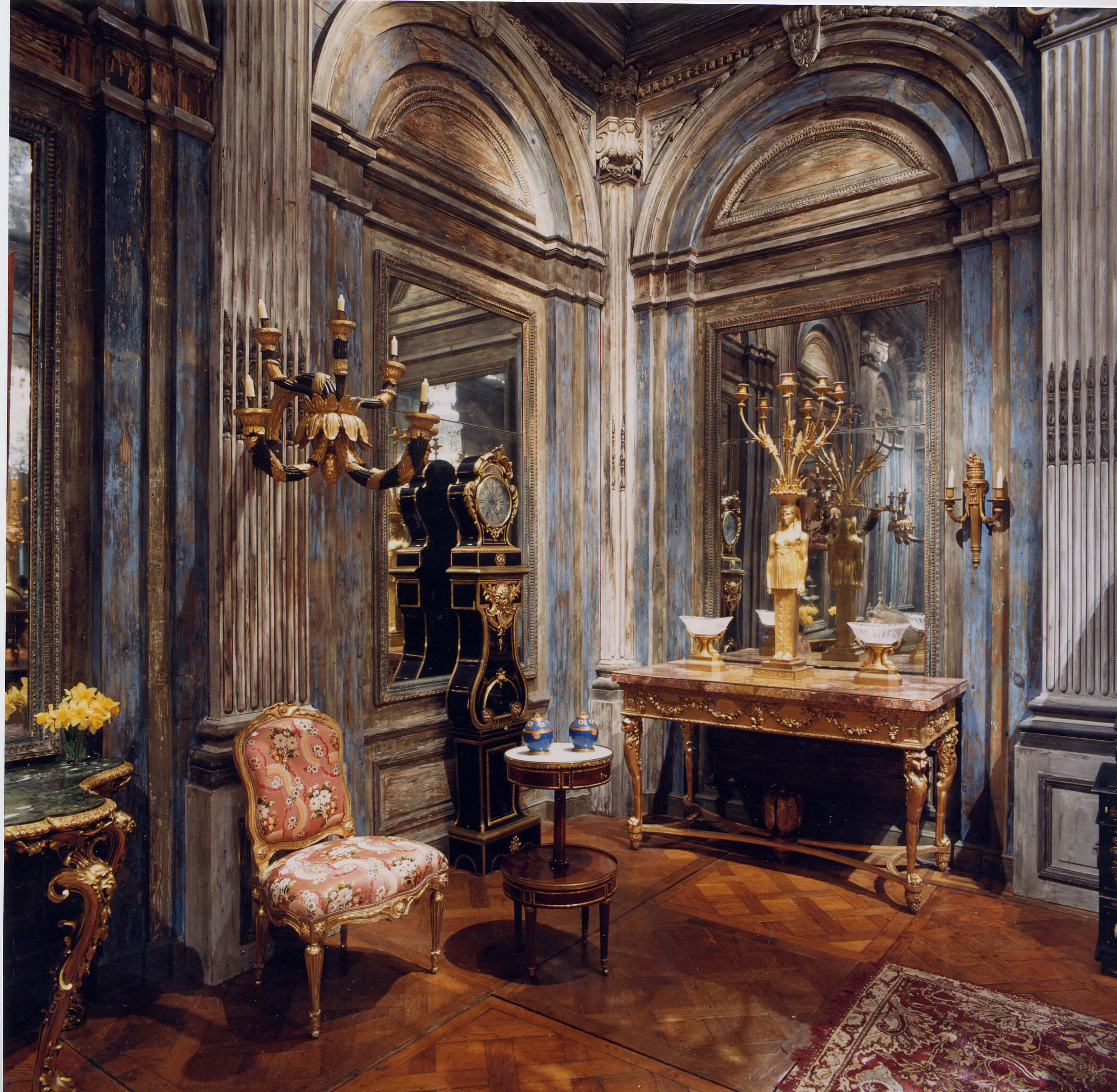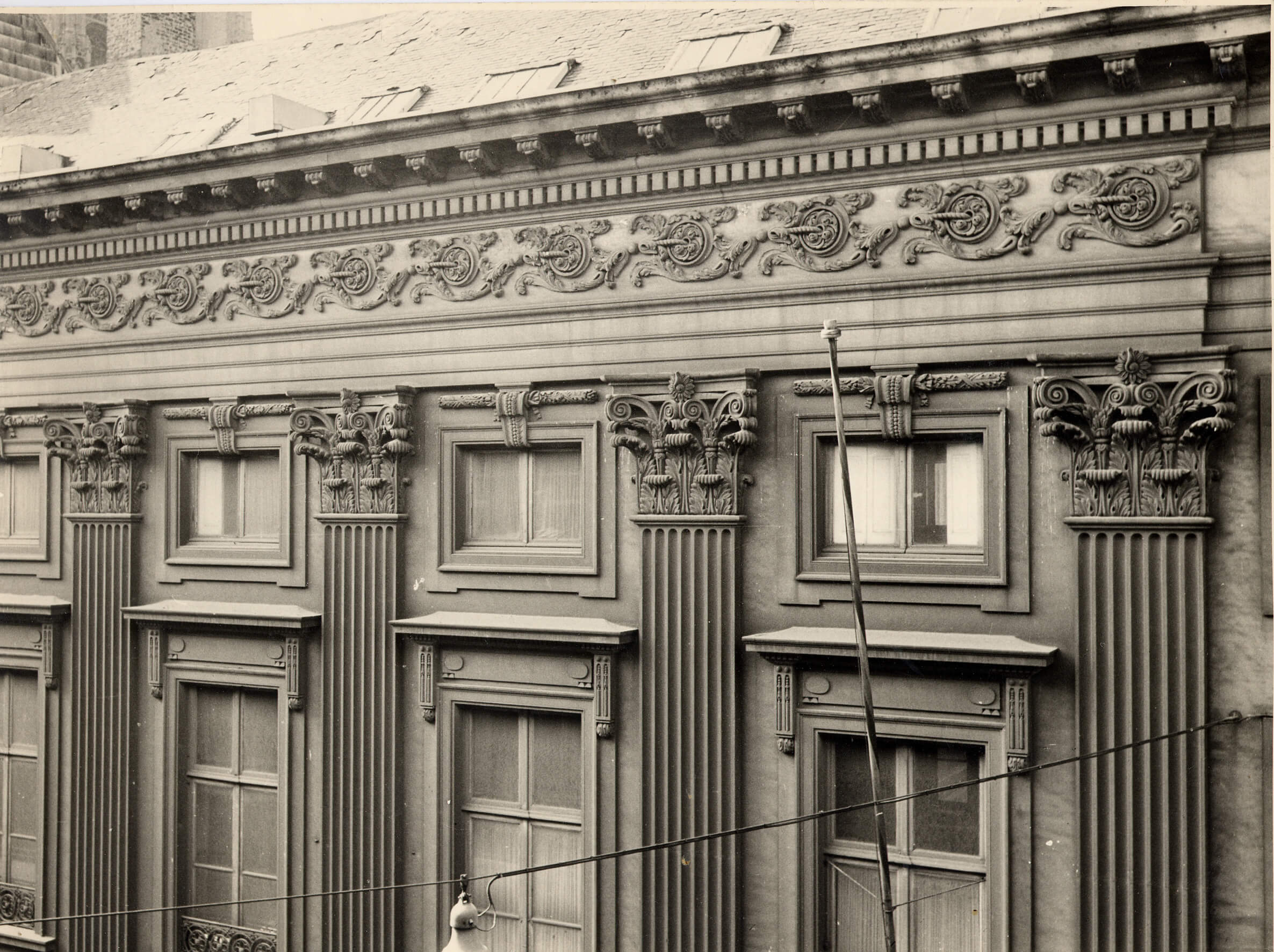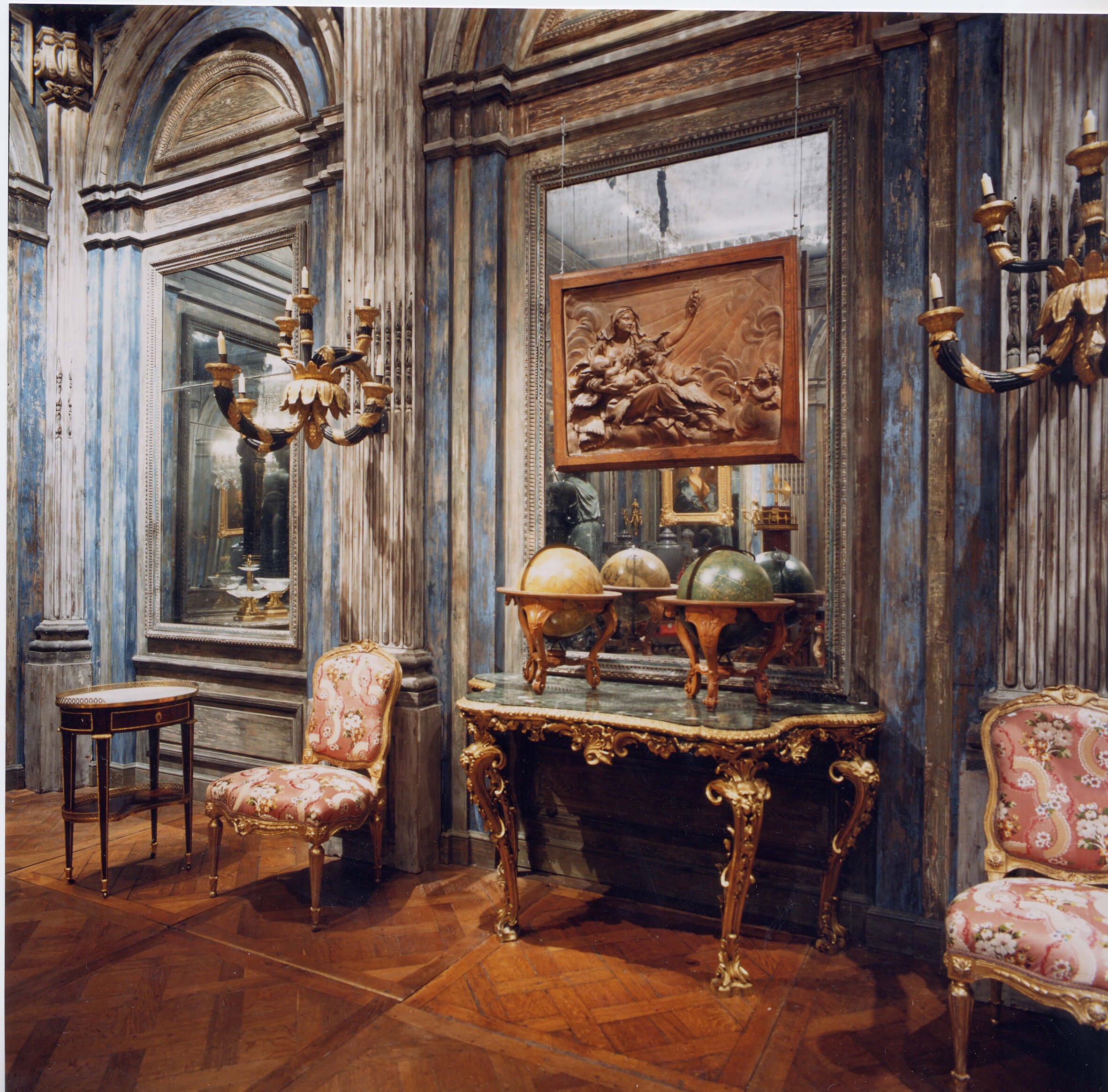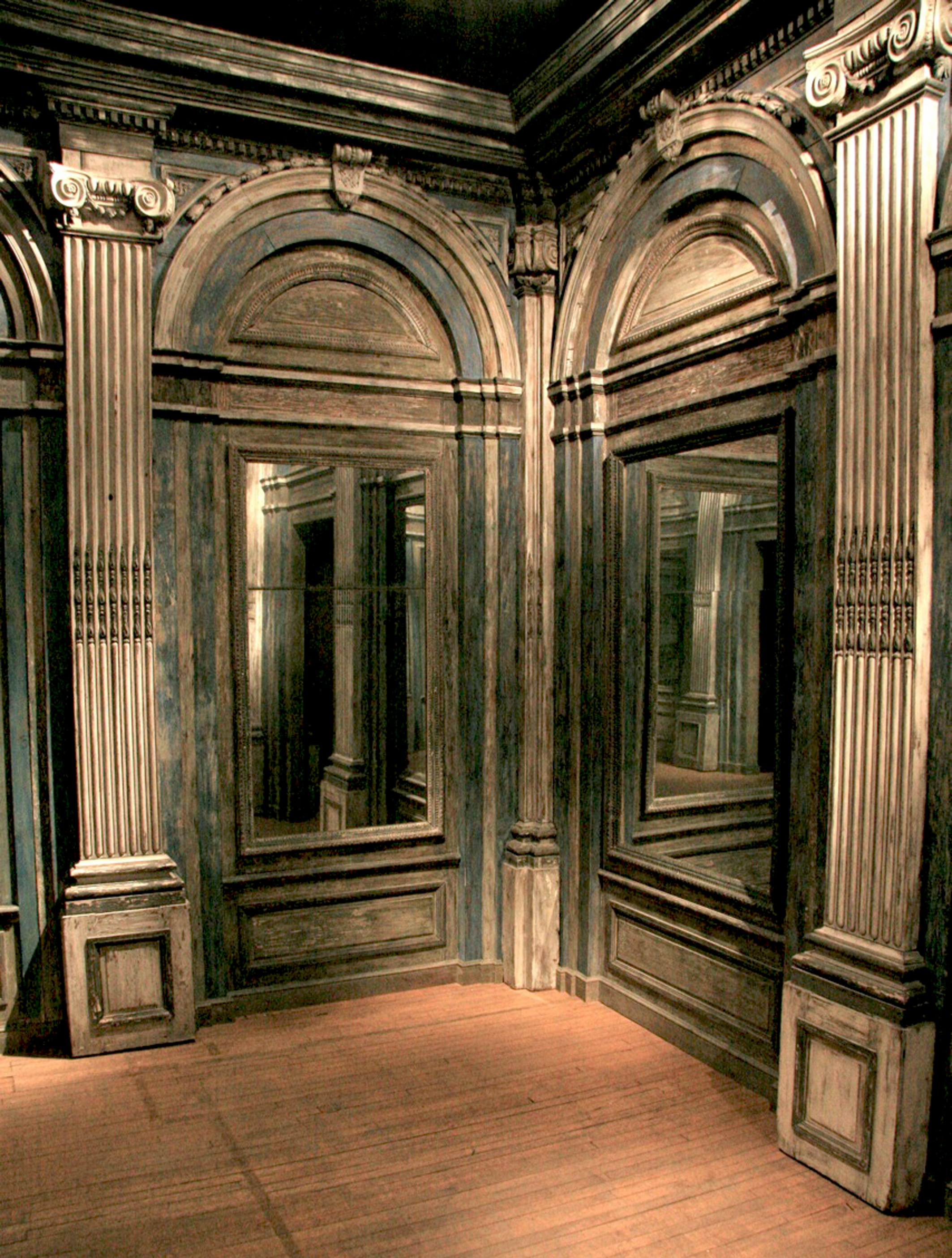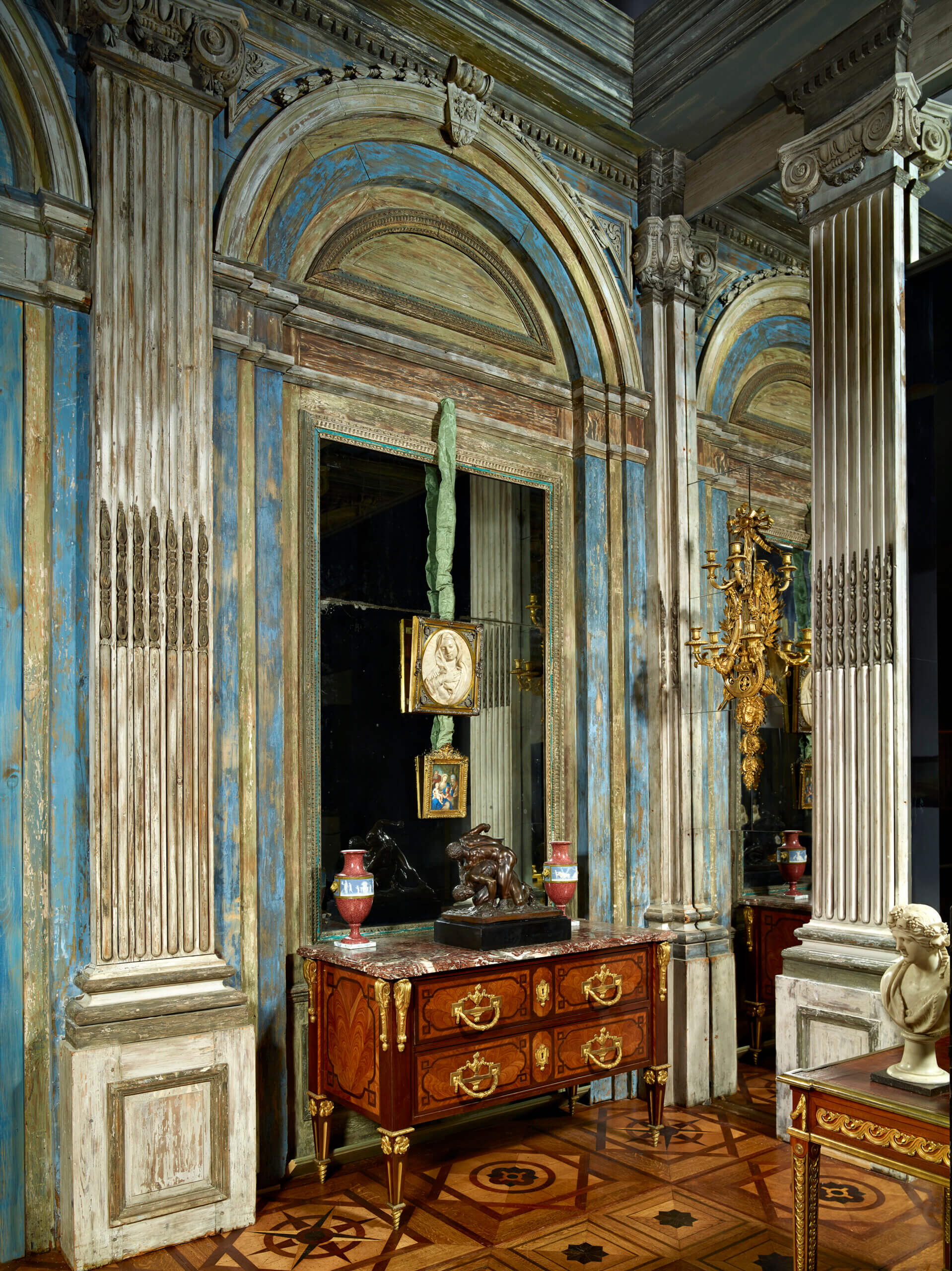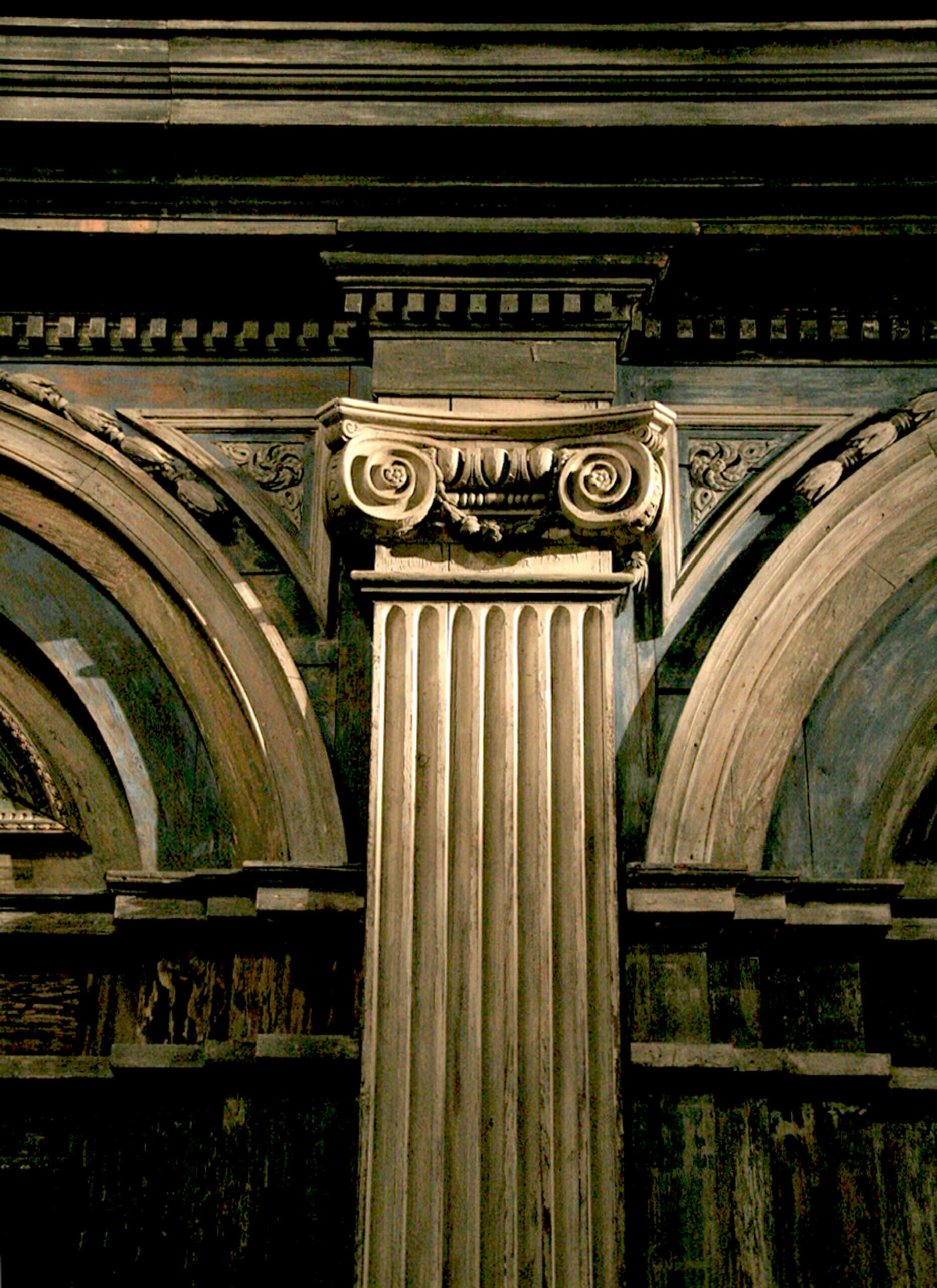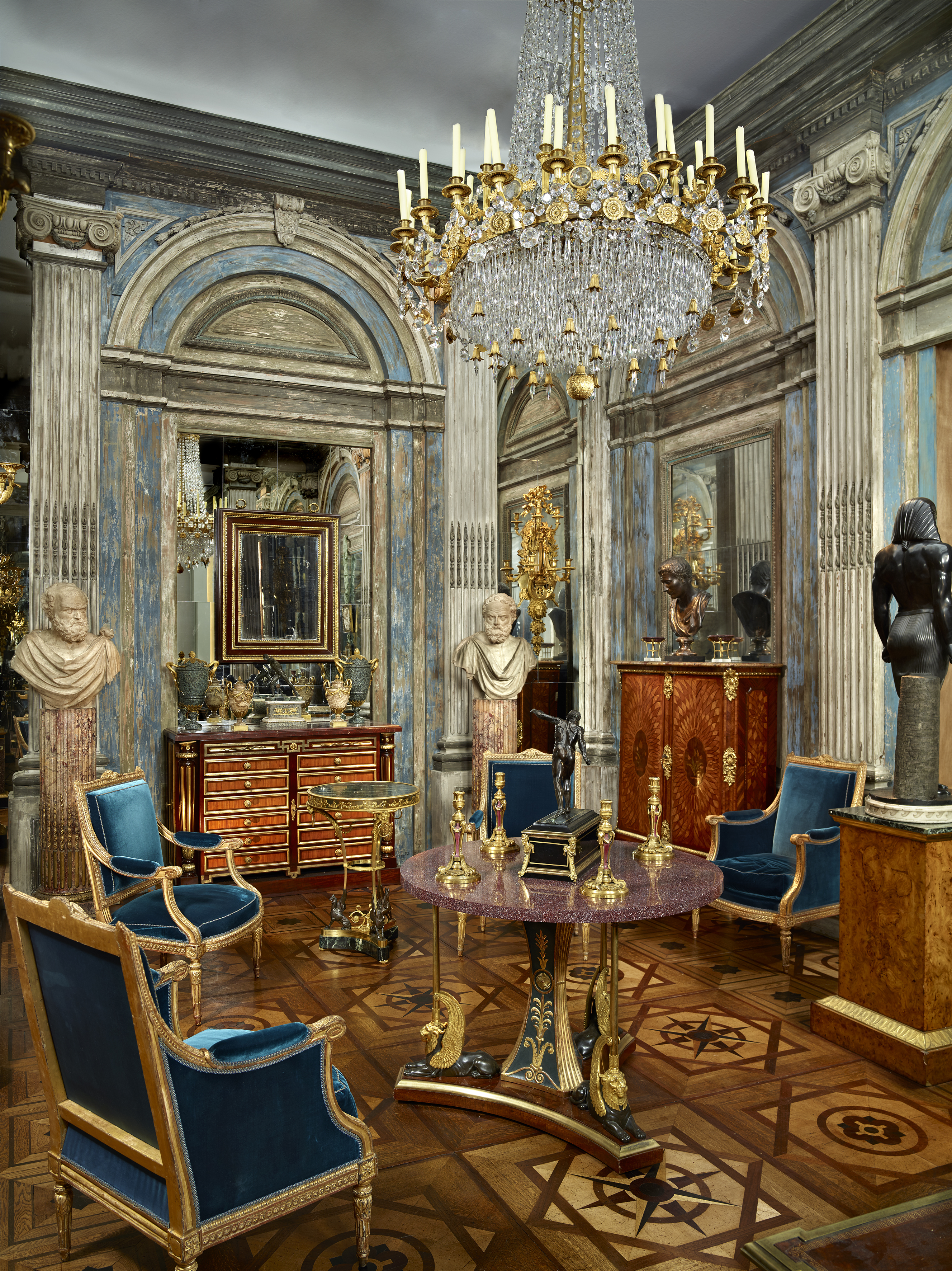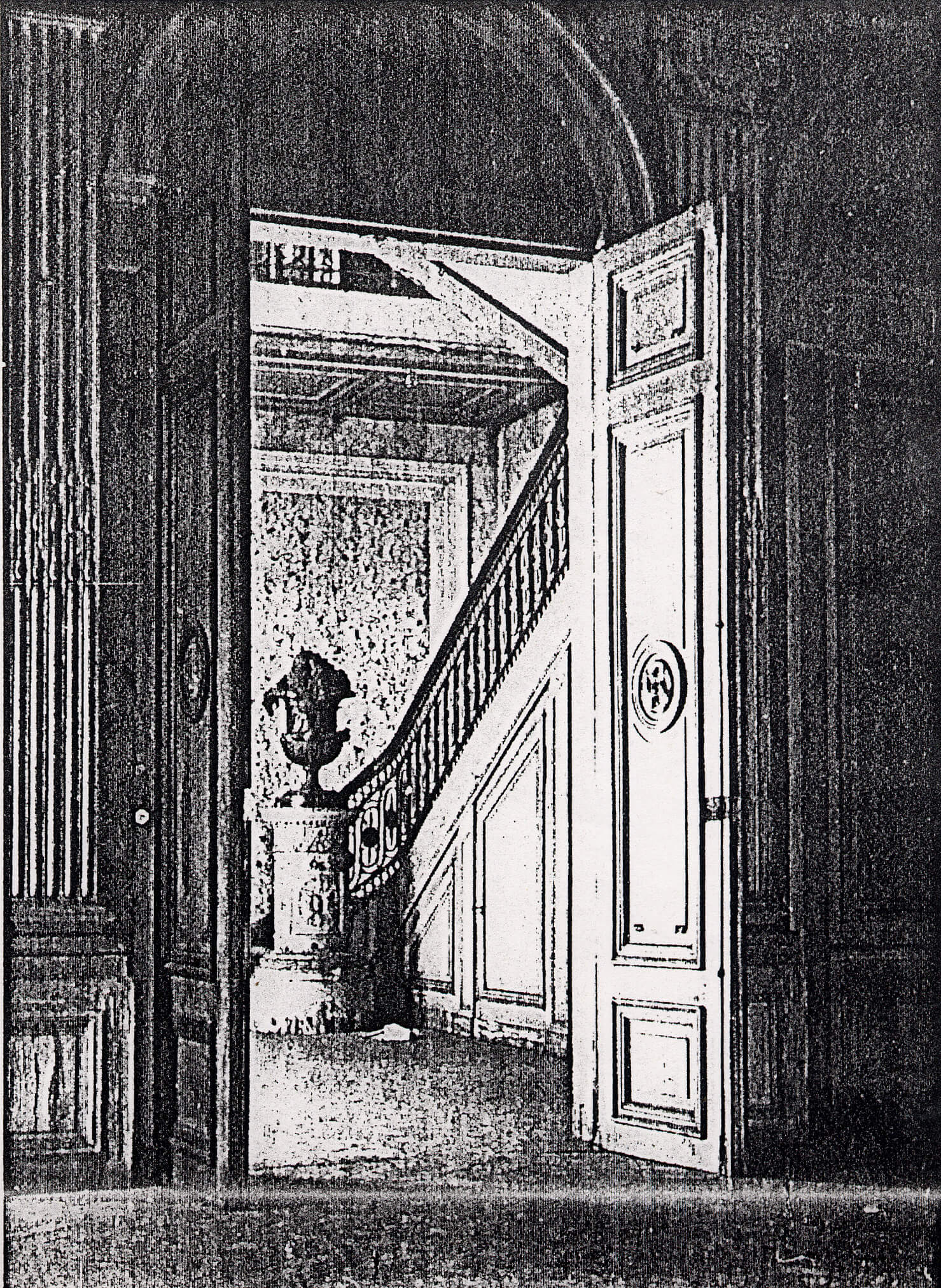

Deal painted blue and white.
H. 4.70 m. (15 ft. 5 in. ); W. 7.94 m. (26 ft.); D. 5,94 m. (19 ft. 5 ¾ in.).
PROVENANCE: Antwerp, Van De Werve – De Schilde hôtel particulier.
LITERATURE : Bruno Pons, Grands décors français 1650 – 1800, Dijon, éditions Faton, 1995, pp. 128-131 and 301-308; Jean Feray, Architecture intérieure et décoration en France des origines à 1875, Paris, 1988, p. 305.
This wood paneling, executed for one of Antwerp’s most important families, the Vandewerve de Schilde, was intended to line the walls of a drawing room on the second floor of the family’s town house. The neo-classical mansion, now lost, once stood in the Kipdorp neighbourhood. The integration of height and columnation governing the rhythmic sequence of the bays, lends a striking sense of power to the ensemble. The sides of each beaded semi-circular arch are flanked by fluted pilasters which are partially cabled and crowned with Ionic capitals. Two small floral ornaments emerge from the whirling rosettes in the sconcheons. A bracket with beaded fillet and rosette carved at the top of each panel protrudes from a ledge subtly enhanced by a dentil shaped frieze. Each pier has a curved plain spandrel with a simple moulded border with highlights of beaded fillets, small floral ornaments and flutings – a framing decoration also found surrounding mirrors and niches. Most extraordinary, and in keeping with an aesthetic formula favoured in the 18th century, is the chromatic leitmotiv of the alternating blue and white palette of the ungilded wainscoting.
The present decoration is a major landmark in interior design, inaugurating the return of classicism that marked the later years of the reign of Louis XV (1715-1774). Instead of yielding to decorative painting, the architect shows a determined preference for the interplay of sculpture and mouldings. The resulting effect is one of both power and restraint that may be traced back to the style of Louis XIV during the years 1700-1710. The predominate scheme of such decoration, echoed in contemporary furniture design, was inspired by the architectural elite in the years 1770-1780.
